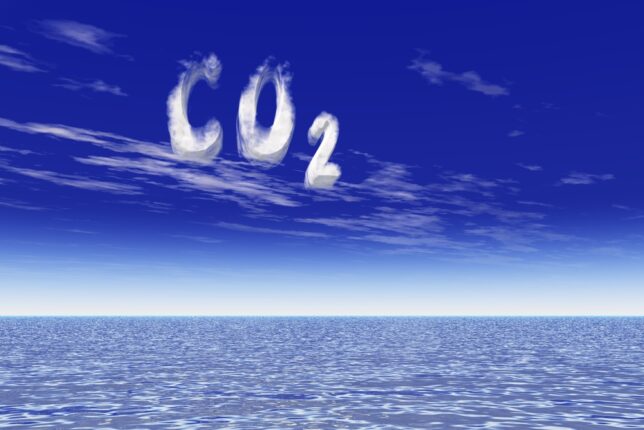Green Watch
Al Gore’s 30 Years of Climate Errors: Bridge Fuel to Nowhere
While growth in the U.S. natural gas industry drove U.S. carbon emissions down by 17.3 percent, Gore moaned that the U.S. had not ratified the Kyoto Protocol climate pact and was being “left behind as the rest of the world moves forward.”
 Credit: Armin Rose. License: Shutterstock.
Credit: Armin Rose. License: Shutterstock.

Al Gore’s 30 Years of Climate Errors: An Anniversary Analysis
Glacial Recount | Snow Job | The Scary Seas
Bridge Fuel to Nowhere | Favoring Failure | Blood & Gore
It Could Have Happened Here
The Bridge Fuel to Nowhere
The end of the film features the former vice president in solutions mode, previewing the policy recommendations that have become his agenda ever since.
“Are we going to be left behind as the rest of the world moves forward?” Gore asked. “All of these nations have ratified Kyoto. There are only two advanced nations in the world that have not ratified Kyoto, and we are one of them. The other is Australia.”
He was speaking of the Kyoto Protocol climate pact that committed the signatories to cutting their greenhouse gas emissions.
But, once again, much as with the hurricanes, a very convenient thing happened in the years after An Inconvenient Truth.
From 2006, when Gore spoke those words, through 2021 total U.S. carbon emissions fell by 17.3 percent, back to roughly the American carbon emissions of 1988. On a per capita basis, the decline was 26.5 percent, a bigger drop than what Germany accomplished and close to the European Union’s 28 percent per capita decline.
Instead of “left behind,” we leaped ahead. But it wasn’t because we adopted “renewable energy,” “carbon capture sequestration,” or the other policy options Gore preached about in the film and continues to promote today.
It was the fossil fuel industry that got us there. Compared to coal, natural gas emits half the carbon per unit of energy produced. That added up to a big opportunity after 2006, when the United States became a natural gas superpower due to the hydraulic fracturing shale gas revolution. In the electricity sector, a massive switch from coal to natural gas ensued in the United States, and that slashed our carbon dioxide output.
By 2021, that trade of fuels alone had led to a net reduction in annual American carbon emissions of 680 million tons. For perspective, that is slightly more than the total 2021 carbon emissions of Germany.
So, since the release of An Inconvenient Truth, the growth of the American natural gas industry has reduced annual American carbon emissions by an amount that now exceeds the annual carbon output of the planet’s fourth largest economy.
Of course, Gore should have celebrated and encouraged this striking progress. Instead—to borrow his words—he was “left behind as the rest of the world moves forward.”
And it required truly ponderous political dancing for him to wind up on the wrong side.
Thirty years ago, in late November 1992, as the previously banal senator was about to become vice president, a New York Times report said this of the agenda the incoming Clinton-Gore administration was promoting:
The blueprint being put together by industry executives as well as staff members close to Mr. Clinton and Vice President-elect Al Gore conforms with the promises Mr. Clinton made during the campaign. He said he wanted to wean the nation from its reliance on coal and oil by converting to cleaner, less costly alternatives like natural gas . . .
With the benefit of hindsight, we know this part of the 1992 Clinton-Gore agenda was on the right track. In 1992 coal was the source fuel for 52.6 percent of U.S. electricity production, and natural gas was just 13.1 percent of the total. By 2021, the cleaner burning natural gas was up to 38.2 percent of the total, and coal had fallen to 21.8 percent.
Gore was still on the correct side of history when he ran for president in 2000. His campaign plan for the environment aimed to “promote expanded exploration for cleaner burning natural gas.”
Even as late as February 2009, just as the shale gas revolution was about to transform American energy, the U.S. economy, and dramatically slash carbon emissions, Gore was still willing to say this: “We should use natural gas for the 18-wheelers as a bridge fuel.”
But those statements ended as soon as the natural gas policy succeeded.
By the 2018 mid-term election Gore recommended a “Yes” vote on Colorado Proposition 112, which would have prohibited natural gas drilling wells from operating within 2,500 feet (nearly a half mile) of an occupied building.
Gore said a “yes” vote would “make climate justice history!” Wisely, 55 percent voted “no.”
By 2019, he had denounced natural gas as a “losing game” and “just as bad as coal.”
And in November 2022, with the Ukraine War scrambling the worldwide natural gas market and causing nations reliant on the fuel to consider developing alternative delivery infrastructure, Gore went to the COP27 annual climate policy talks in Egypt and told the Associated Press that natural gas was no longer a bridge fuel, but rather a “classic bridge to nowhere.”
In the next installment, An Inconvenient Truth doubles down on failure with weather-dependent wind and solar energy.



